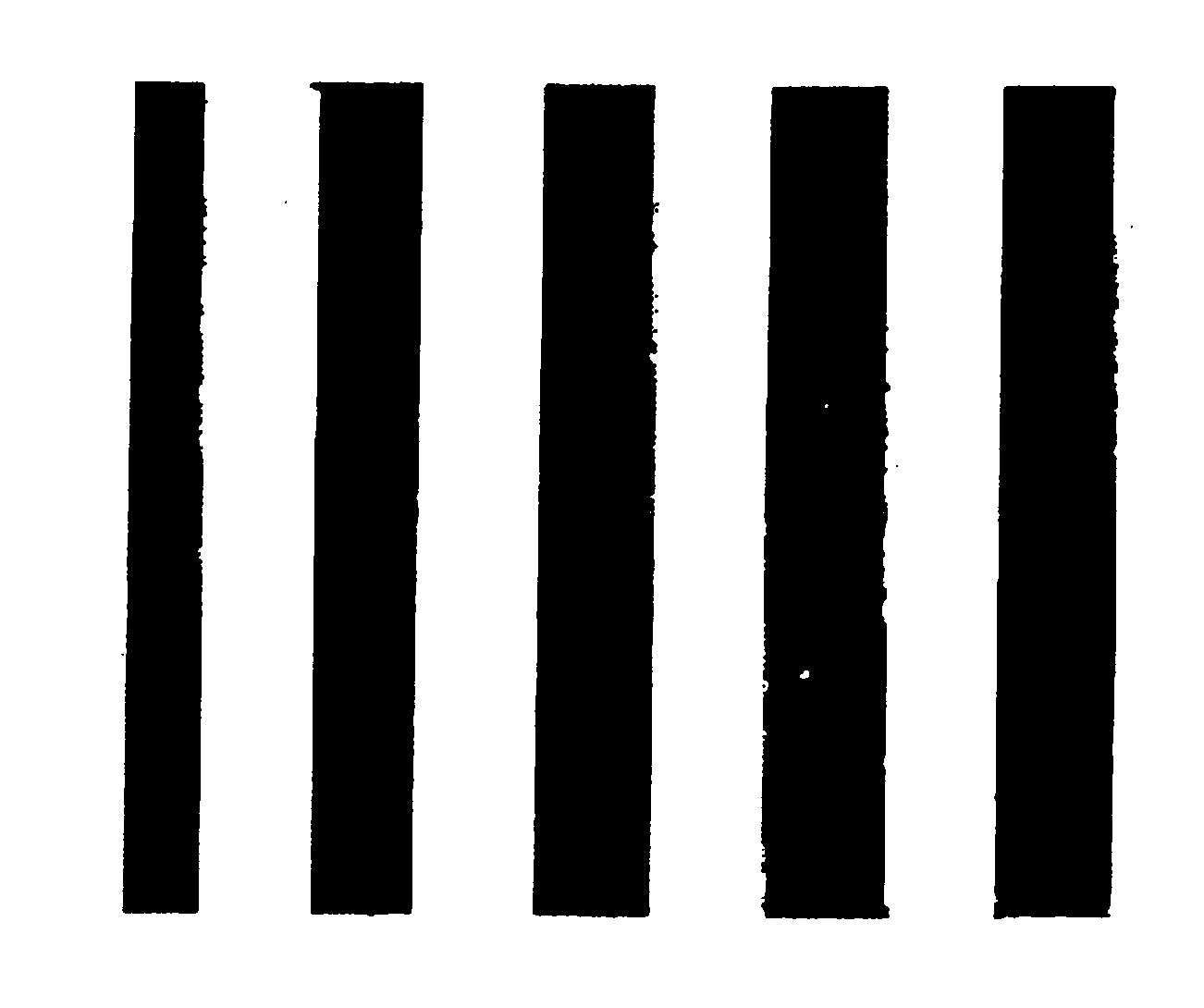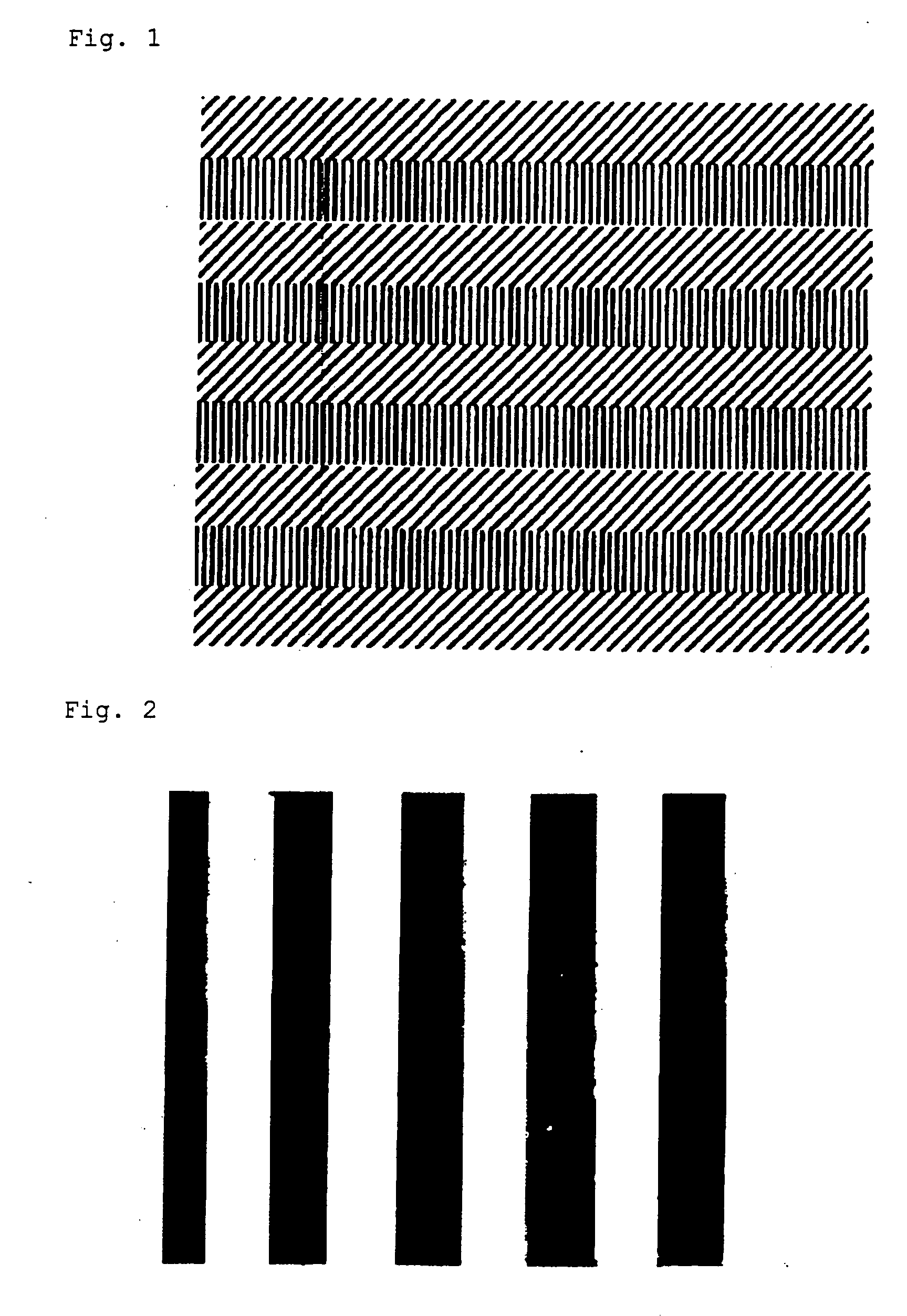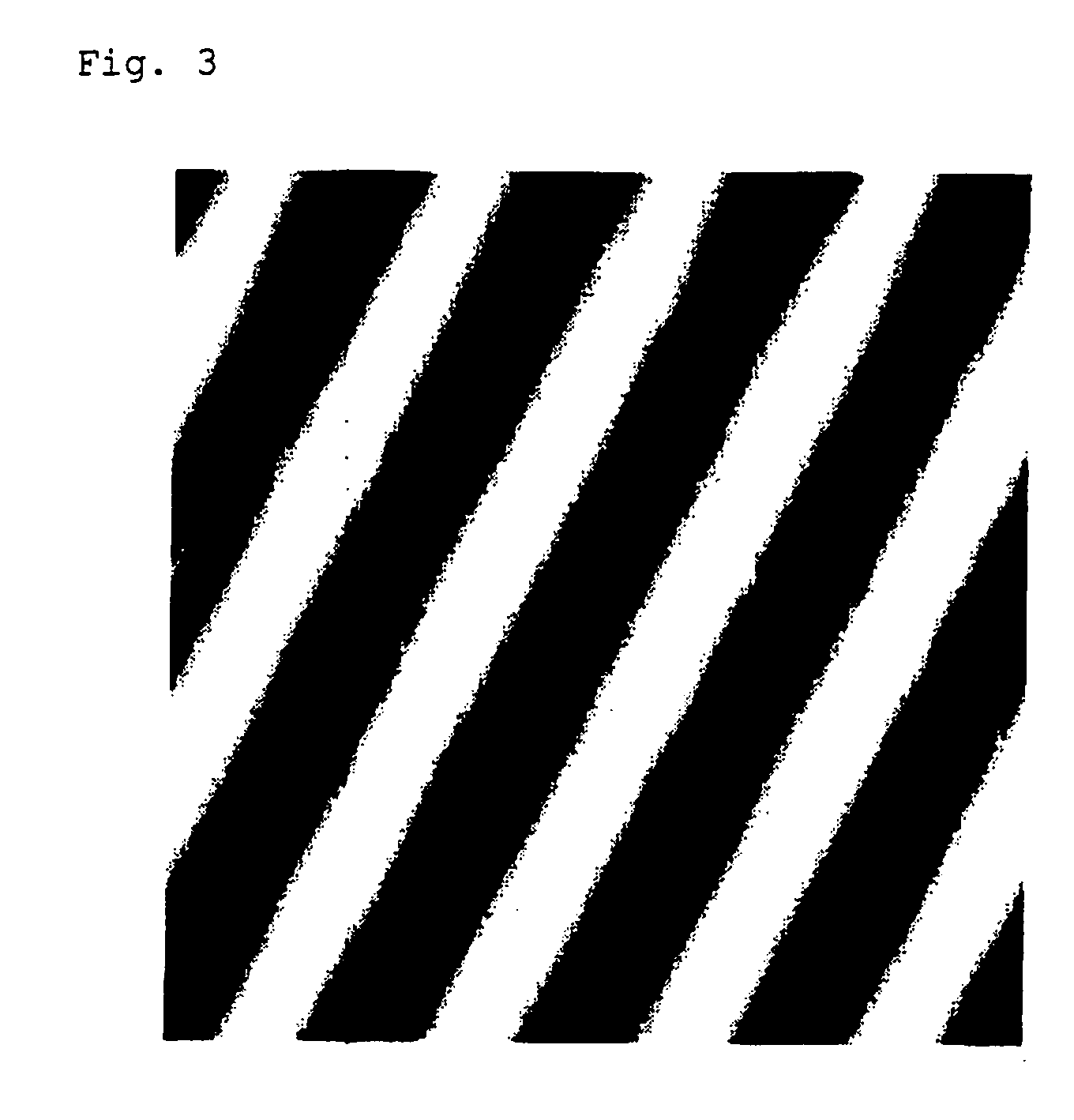Micropattern retardation element
- Summary
- Abstract
- Description
- Claims
- Application Information
AI Technical Summary
Benefits of technology
Problems solved by technology
Method used
Image
Examples
example 2
[0092] Similarly as in Example 1, except that direction of a photo mask having stripes was changed, a light irradiated vacant liquid crystal cell was prepared, and into the space of said liquid crystal cell, an about 32% aqueous solution of lithium 4-trans-pentyl cyclohexanoate was charged at about 45° C., and the peripheral of the liquid crystal cell was completely sealed with an epoxy resin. Temperature of the liquid crystal cell was lowered to room temperature (25° C.) and the cell was observed with the polarized light microscope to confirm orientation controlled state. FIG. 3 shows a photo image with the polarized light microscope.
[0093] Lithium 4-trans-pentyl cyclohexanoate, showing lyotropic liquid crystalline property, was synthesized from 4-trans-pentyl cyclohexanoic acid and lithium hydroxide as follows:
[0094] 4-trans-pentyl cyclohexanoate and 19.8 g of 4-trans-pentyl cyclohexanoic acid were dissolved into 100 mL of a 5% aqueous solution of lithium hydroxide by heating un...
example 3
[0096] A light orientation film was produced using poly(1-(2-methacryloyloxymethoxy)-4′-carbonyloxyethylazobenzene), and a liquid crystal cell was produced similarly as in Example 1, and into the space of 2 glass substrates of the light irradiated liquid crystal cell, an about 32% aqueous solution of lithium 4-trans-pentyl cyclohexanoate was charged, and by light orientation of a lyotropic liquid crystalline phase of lithium 4-trans-pentyl cyclohexanoate, good orientation state was obtained.
example 4
[0097] According to Example 1, a glass substrate having a polyamide thin film containing photoactive groups was formed, and said glass substrate was irradiated by linear polarized light, obtained by passing visible light produced by using a cut-off filter at 400 nm, through a polarizing plate, using a high pressure mercury lamp for 1 minute from a distance of 50 cm from said substrate, to unidirectionally orient a molecular axis of photoactive groups. Then, the whole surface of the glass substrate was covered with a photo mask having stripes in about 70 μm interval, so that the stripe direction is in parallel to electric vector of linear polarized light used in the first irradiation, and over which linear polarized light rotated by 45 degree from the first linear polarized light was irradiated to prepare an exposed substrate.
[0098] Then, a solution dissolved with 5 parts of sodium cromoglycate (produced from Shiono Chemical Co., Ltd.), 0.2 parts of Emal 20 C (product name: produced...
PUM
| Property | Measurement | Unit |
|---|---|---|
| Polarized light | aaaaa | aaaaa |
| Thermotropism | aaaaa | aaaaa |
| Birefringence | aaaaa | aaaaa |
Abstract
Description
Claims
Application Information
 Login to View More
Login to View More - R&D
- Intellectual Property
- Life Sciences
- Materials
- Tech Scout
- Unparalleled Data Quality
- Higher Quality Content
- 60% Fewer Hallucinations
Browse by: Latest US Patents, China's latest patents, Technical Efficacy Thesaurus, Application Domain, Technology Topic, Popular Technical Reports.
© 2025 PatSnap. All rights reserved.Legal|Privacy policy|Modern Slavery Act Transparency Statement|Sitemap|About US| Contact US: help@patsnap.com



